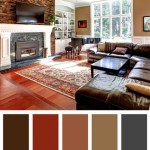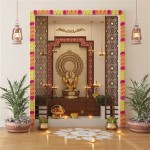How To Decorate A Small Rectangular Family Room
Transforming a small rectangular family room into a welcoming and functional space can be a delightful challenge. By incorporating strategic design choices, one can maximize the room's potential and curate an environment conducive to both relaxation and entertainment. This article will explore practical tips and innovative ideas to decorate a small rectangular family room, making it an inviting haven for the entire family.
Utilize Furniture with Dual Functionality
In a small space, every piece of furniture should serve a purpose. Opt for multi-functional pieces that cater to different needs. For instance, a sofa with built-in storage can provide additional seating while concealing blankets, games, or other items. Consider a coffee table with drawers or shelves to store magazines, remotes, or board games. Another effective strategy is to choose a convertible sofa bed that can easily transform into a sleeping surface for overnight guests. This approach eliminates the need for a separate guest bed, maximizing floor space and creating a versatile seating arrangement.
Embrace Light Colors and Reflecting Surfaces
Light colors have the remarkable ability to visually expand a space. Opting for a light color palette on walls, furniture, and upholstery can create a sense of spaciousness. Consider using a neutral base like white or beige and incorporating pops of color through accent pieces and artwork. Reflective surfaces, such as mirrors or glossy furniture, can further enhance the sense of spaciousness by reflecting light and creating the illusion of more depth. Place a large mirror strategically across from a window to amplify natural light and create a sense of openness.
Employ Vertical Space
Maximizing vertical space is crucial in a small rectangular room. Install shelves or floating cabinets along the walls to display books, decorative items, or even plants. Tall bookcases can serve as room dividers, separating the seating area from a designated work or play zone. Utilize the area above the sofa or fireplace for artwork, mirrors, or a gallery wall. These vertical solutions not only create visual interest but also prevent the room from feeling cramped and overcrowded.
Create Defined Zones
A small rectangular room can easily feel disconnected without clear definition. Use furniture, color accents, or rugs to establish distinct zones within the space. For instance, a rug can delineate the seating area, while a grouping of chairs can create a cozy reading nook. Different lighting schemes can also enhance the zoning effect. A dimmer switch for overhead lighting allows for adjustable brightness, and strategically placed lamps can provide focused illumination for reading or tasks.
Prioritize Flow and Circulation
Maintaining a sense of flow is essential in a small space. Avoid placing furniture in the middle of the room, as this can obstruct movement. Instead, arrange pieces along the walls, creating pathways for easy navigation. Consider the size and placement of the coffee table. A smaller, round table can facilitate easier movement around the seating area. If space is tight, consider placing a console table behind the sofa to create a functional surface without hindering circulation.
Incorporate Texture and Visual Interest
Although light colors offer the advantage of visual expansion, it's crucial to avoid a monotone look. Introduce texture and visual interest through the use of patterned rugs, textured throw pillows, or unique furniture pieces. A fluffy rug can add warmth and comfort, while a patterned armchair can serve as a focal point. Consider adding a statement light fixture that complements the room's style. These elements can prevent the room from feeling monotonous and create a sense of depth and dimension.
Choose Scaled Furniture
In a small rectangular room, it's important to select furniture that is proportionate to the space. Avoid bulky or oversized pieces, as they can overwhelm the room and make it feel cramped. Instead, opt for compact and streamlined furniture that allows for sufficient movement and circulation. For example, a loveseat can occupy less space than a standard sofa, while a small coffee table can still provide a functional surface without hindering movement.
Consider Lighting
Lighting plays a crucial role in setting the mood and ambiance of a space. In a small rectangular room, proper lighting can create a feeling of spaciousness and enhance the overall aesthetics. Invest in a combination of natural and artificial lighting sources. Maximize natural light by keeping windows unobstructed. Incorporate layered lighting with task lighting for reading or working, ambient lighting for general illumination, and accent lighting to highlight specific features or artwork.
Embrace Minimalism
Minimizing clutter is essential in a small rectangular room. Opt for a minimalist approach by decluttering and showcasing only essential items. Consider using storage solutions like baskets, bins, or drawers to store belongings and keep surfaces clear. This strategy promotes a sense of spaciousness and allows the beauty and functionality of carefully selected items to shine.

How To Arrange Furniture In A Rectangular Living Room Design Cafe

Top Tips On How To Design Your Rectangular Living Room The House

17 Narrow Living Room Ideas To Get Inspired Interior God Long Small Decor

Small Rectangle Living Room Layout 3 Freshouz Home Architecture Decor

Top Tips On How To Design Your Rectangular Living Room The House

How To Furnish And Love A Long Narrow Living Room In 5 Easy Steps Lisa Goulet Design Furniture Layout

Small Living Room Layout 8 Design Tips

13 Small Living Room Ideas That Will Maximize Your Space Architectural Digest

How To Arrange Furniture In A Rectangular Living Room Design Cafe
:max_bytes(150000):strip_icc()/decorate-long-narrow-living-room-2213445-04-96b1f74b88d343cba835f6e13fbd50df.jpg?strip=all)
Ideas For Decorating A Long And Narrow Living Room
Related Posts







